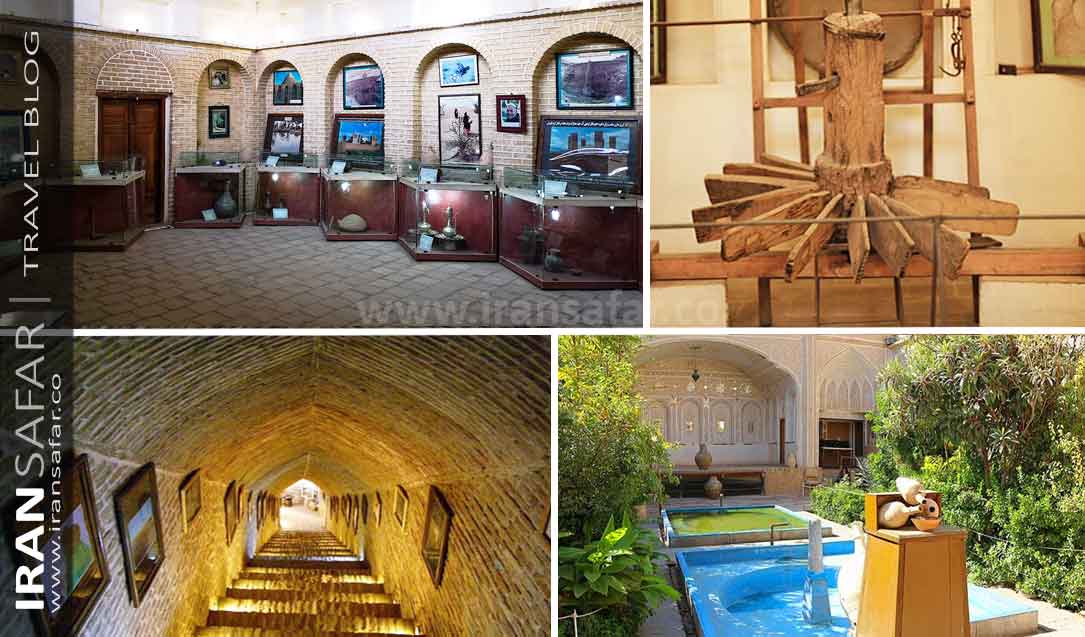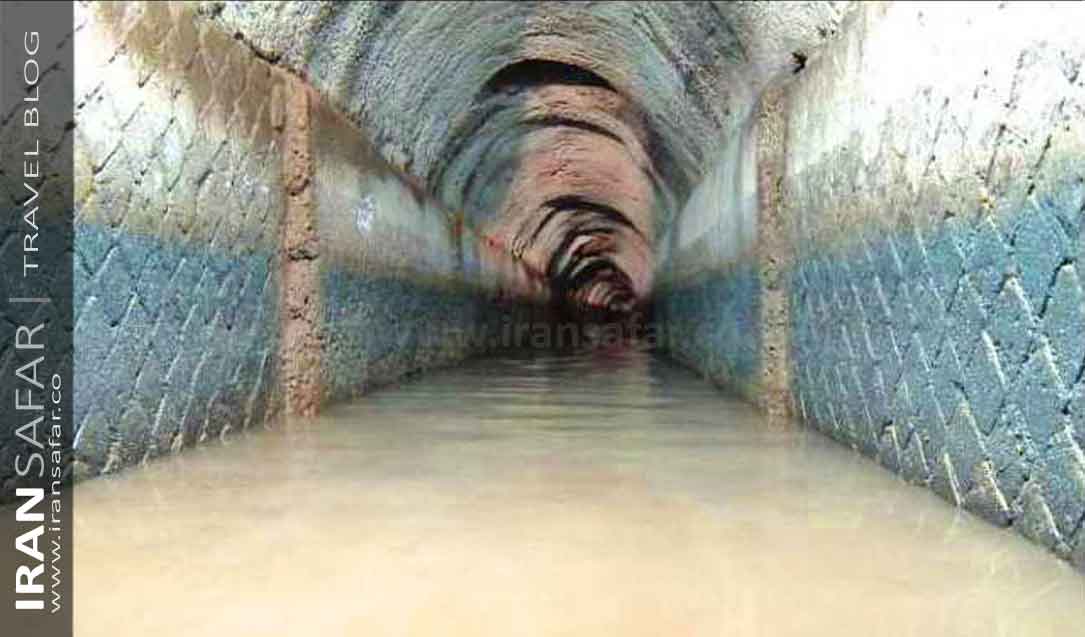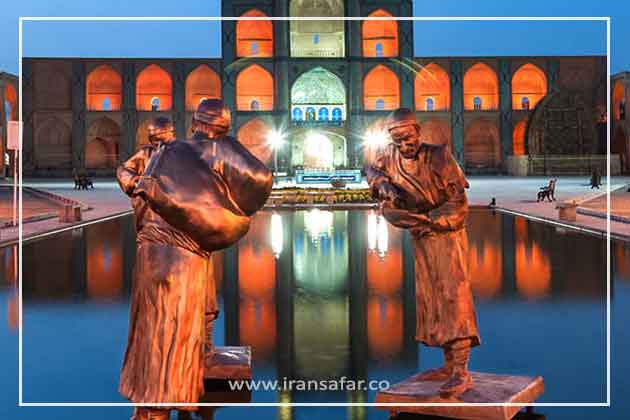Yazd Water Museum is one of Yazd Attractions located in the center of the city in front of Amir Chakhmaq Complex. Housed in a stunning traditional Persian building, the Yazd Water Museum itself is a masterpiece of architecture. It is an old mansion that belonged to a famous wealthy merchant called “Haj Ali Akbar Kolahduz” in Qajar Dynasty. In 2000, they turned the mansion into a museum. This is a 124-year-old Museum in Yazd; a collection of tools and techniques used for the past 2000 years in Iran to create underground waterways (Persian Qanat) and connect them to the city and field locations for agricultural and other uses.
 Water Museum, Yazd, Iran
Water Museum, Yazd, Iran
Yazd Water Museum – Introduction
Yazd, a city known for its historical significance and breathtaking architecture, has been founded in the middle of Iran’s central desert. Therefore, the city boasts a fascinating ancient water management system. Living in the heart of the desert, Yazd’s residents have always understood the importance of water. The city’s unique water supply system has been carefully designed to overcome the scarcity of water and meet the needs of its inhabitants. Yazd Water Museum, an exceptional institution designed to showcase the city’s rich water heritage, such as historical aqueducts, traditional water reservoirs, and ingenious hydraulic structures that have sustained this desert city for centuries.
The Mansion
The museum building used to be an old mansion that was built in the 19th century. In the past, the layout of Yazd’s old houses was typically designed to suit the hot and dry climate of the region, while also reflecting the traditional architectural style of Persian desert cities. They were ingeniously constructed to provide comfort to the residents while preserving water and promoting natural ventilation. Here is an overview of the typical layout and elements of this mansion:
Courtyard: The central feature of Yazd’s old houses was the courtyard, known as “hayat“. The courtyard was surrounded by rooms on all sides and served as the heart of the house. It provided an open space for evening family gatherings, relaxation, and entertainment.
Garden: Some wealthier households had a small garden (bagh) within the courtyard, which added greenery and shade to the living space. Gardens were adorned with fruit trees, flowers, and a small water pool to cool the surrounding air. This mansion has a small garden in the middle of the courtyard.
Iwan (Eivan): An Eivan was a large, vaulted reception area or veranda situated on one side of the courtyard. It featured decorative arches and provided a cool space for guests during hot summers.
Living Quarters: The rooms surrounding the courtyard were the living quarters for the family members. These rooms were typically rectangular in shape and had simple yet elegant designs. They were adorned with colorful tiles and intricate plasterwork.
Basement: Many houses in Yazd had partially or entirely underground rooms called “sardab” or “zirzamin” These rooms offered a cooler environment during the scorching summers and were used for storage or as living spaces.
Wind Towers (Badgirs): Yazd’s old houses often featured windcatchers, or wind towers; Traditional architectural structures designed to catch and direct cool breezes into the living spaces. Badgirs were especially effective in cooling the underground rooms.
Water Reservoirs (Aab Anbar): In addition to the Qanats, Yazd boasts a network of traditional water reservoirs known as Ab Anbars. These ingeniously designed structures allowed water to be stored securely, ensuring a constant supply during arid periods. Water was a precious resource in Yazd, and some houses had their own cisterns called Ab Anbar. These were usually underground structures that collected and stored qanat water.
Qanat: Two qanats are running beneath the house at different levels and cooled down the temperature of the basement quarters. Qanats are accessible through a special stairway called Payab.
Also Read : Persian Gardens
Read about Persian Qanats in UNESCO website

Yazd Water Museum Floors & Sections
Technically, Yasd Water Museum has 4 different levels, all of which are open to public. Each level has its own characteristics. Floors are connected together through a stairway called Payab. For example one floor was for storing food and fruits. One was used as a living room due to the cool and pleasant temperature. One was also used for saving water and another one for kitchen.
Level 1 (-3 Floor)
The first level is the lowest floor of the house. Two branches of Rahim Abad and Zarch qanats pass underneath this floor. It is interesting to know that the large and old aqueduct of Zarch, with a length of 75 km and an age of over 2 thousand years, is still active.
Level 2 (-2 Floor)
The second level of the house, which is located 10 meters below the ground level, is the storage space of the complex. The place where the Qanat water reaches the ground is called Payab. This chamber has a heptagonal shape, and in its center there is a blue basin through which the water passes. The air temperature at this level is constant and cool throughout the year! For this reason, in the past, this place was also used to store food. They put food on a wooden board and then hung it from the ceiling.
Level 3 (-1 Floor)
The third level of Hatters’ house is its basement. On the four sides of the courtyard, just below the ground floor rooms, there are basements with numerous rooms and corridors. The residents of this house lived on this floor most days of the hot summer season; Because its temperature is lower. It is interesting to know that each room in the basement belonged to a special person and the residents of the house each had their own room.
Level 4 (Ground Floor)
The fourth level of the Yazd Water Museum is the ground floor of the hatters’ house, which includes different parts such as the sash room, the five-door room, the corridor room, the wind room, the hall, etc. This part has been the main residence of the residents of the historical house of Kolahdoz. In the past, Haj Seyyed Ali Akbar Kolahdoz lived in this place with his wife, children, daughters-in-law and servants. In the following, we will talk more about the rooms on the fourth level of this house.
Qanats documents
A major part of the museum is devoted to models, photos and the engineering documents of Qanat construction projects in Yazd. The problem of lack of water has existed in this region for a long time, and for this reason, many aqueducts have been built in Iran’s desert areas. visitors of the Yazd Water Museum, can learn about this sophisticated system.
Documents and devices
Other items that you can see in this museum are the documents and tools related to the distribution and endowment of water in the past. The distribution documents in this water museum, show how water was distributed among farmers and garden owners. Among these documents, some interesting marriage documents are also found which show that some people determined Qanat water as a woman’s dowry; The same thing that had the status of gold in the desert.
Tools and utensils
In another part of the museum, there is a collection of containers, tools and equipment related to storing and transporting water. By visiting these tools and devices, you can utterly understand how such an architectural and engineering masterpiece of the ancient world like Nashtifan Windmills would work. This is a great way to understand the reason why Iranians respected water so much. There exist also old water ownership documents that imply how wealthy farmers or householders would purchase water.
Also Read : Yazd Fire Temple
Where to Eat near Yazd Water Museum
Haft Khan Traditional Restaurants is 750 meters away. So You can reach there in 10 minutes. Malek O-Tojjar Traditional Restaurant & hotel, and Khan Bath Traditional Restaurant (an old Persian Hammam) are also located nearby.
Where to Stay near Yazd Water Museum
Yazd Traditional Hotel is a 2-star budget hotel and Vali Traditional Hotel is a 3-star budget hotel are some of the close hotels you can attend. Malek o-Tojjar boutique Hotel and Mehr hotel are also located in the same area go. There are so many traditional and modern hotels near Yazd Water Museum which you can choose due to your needs and priorities.
FAQs
Is the Yazd Water Museum open to the public?
Yes, the Yazd Water Museum is open to visitors, allowing them to explore the city’s remarkable water heritage.
Can visitors access the Qanats?
While the museum provides detailed insights into the Qanat system, access to the actual underground channels may not be allowed for preservation purposes. But there is a specific Qanat tour in Yazd.
Are there guided tours available at the museum?
Yes, the museum offers guided tours led by knowledgeable experts who provide in-depth information about the exhibits and the history of water in Yazd.



Comment (0)